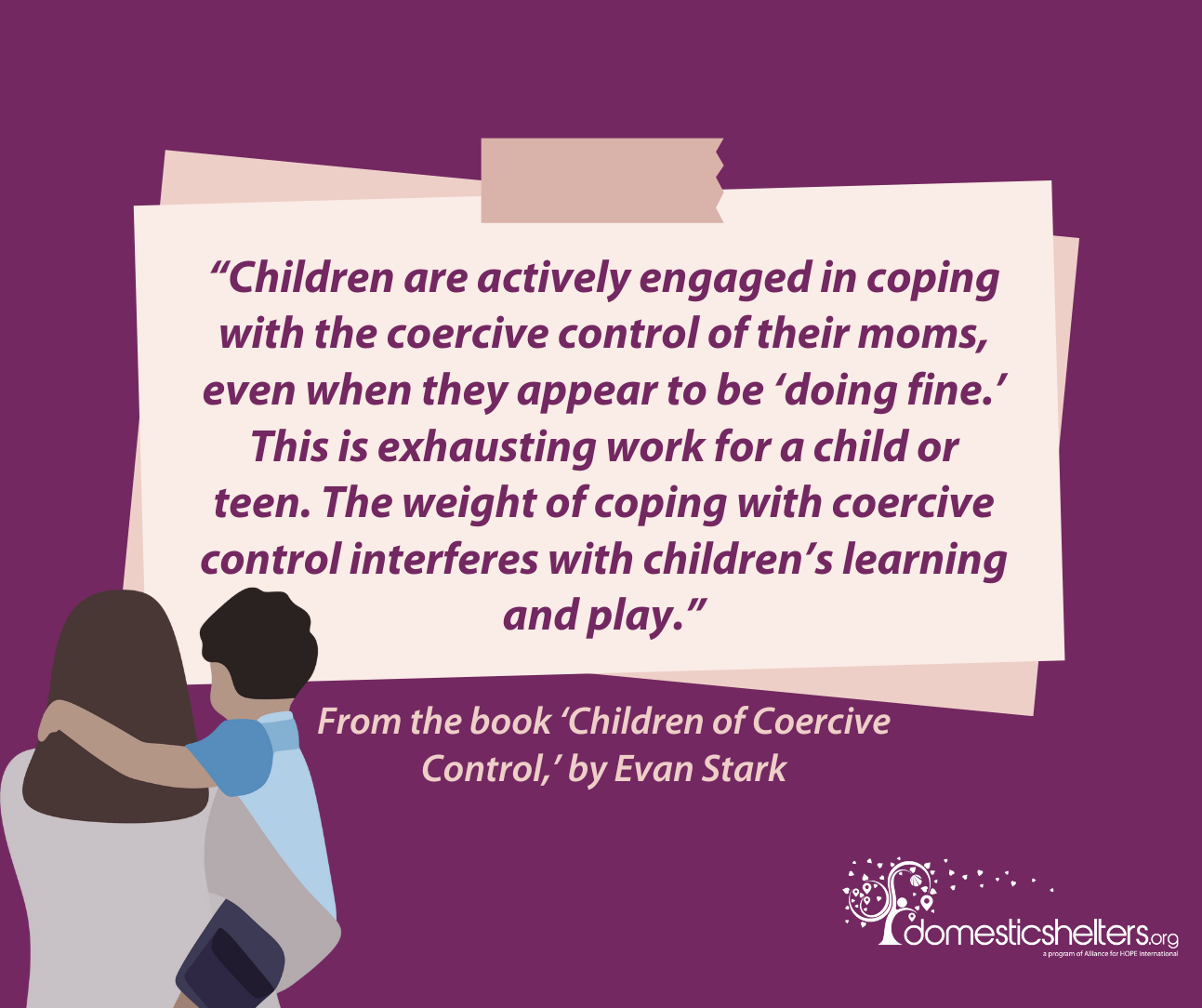1. Select a discrete app icon.

notes
10 Important Takeaways from 'Children of Coercive Control'
Sociologist Evan Stark’s newest book emphasizes the many ways intimate partner abuse harms children
- May 20, 2024

Note: Evan Stark, Ph.D. passed away suddenly on March 17, 2024. He died while recording a podcast on coercive control. He lived his deep commitment up to his last breath. He sent a message related to this review on the day he died.
Sociologist Evan Stark has long labeled abusers’ dominating strategies as “coercive control.” Throughout his work, he highlighted that domestic abuse consists of far more than acts of physical violence. Thanks to Stark, we understand domestic abuse as entrapment. An abuser’s tactics include isolation, intimidation, financial abuse and so much more.
Stark’s 2007 book, Coercive Control: How Men Entrap Women in Personal Life, changed perspectives, practices and laws throughout the world. His new book, Children of Coercive Control, is equally groundbreaking. And like the first, it is a dense, scholarly text with important ideas—but it’s not an easy read.
Children of Coercive Control discusses how abusers harm children as part of their efforts to control their female partners. (Stark acknowledges that in rare cases women coercively control men, and he briefly mentions same-sex couples with coercive control).
Below are 10 important takeaways from the book.

- Abusers isolate and control children as a way to control their adult partners. Sometimes it is the primary way. Abusers intentionally “destroy” children to dominate their mothers. Stark describes this mistreatment of children as a “staged performance” directed toward the primary victim, his partner.
- Intimidation and fear-based discipline form part of a campaign to induce terror and reduce a child’s courage and confidence. The ultimate goal is to control the mother. Stark writes, “Intimidation runs throughout coercive control. Only fear makes it seem rational for children to say “yes” when they mean “no,” to remain silent when it is time to speak and to give up what is rightfully theirs.”
- Abusers intentionally terrorize their partners in front of the children, to make children see their mothers as weak. This is a deliberate attempt to fracture the mother-child relationship.
- In a family with coercive control, authorities should consider the abuse victim and children’s interests together; they are inextricably linked.
- Infants and preschoolers are a “special case.” Domestic abuse of a mother produces stress-induced fear in young children. Coercive control threatens young children’s emotional security. Their distress will often show up as disturbed moods, sleep and eating problems, and difficulties interacting with peers and adults. These disturbances are how young children reveal that something is very wrong in their world. Sometimes symptoms do not appear right away; Stark refers to this as the “sleeper effect.”
- Children are actively engaged in coping with the coercive control of their moms, even when they appear to be “doing fine.” Stark writes that children interpret, predict and assess “episodes” at home. They wonder if they have caused the problems. Children worry. Even young children take steps to protect themselves, their siblings and their mothers. This is exhausting work for a child or teen. The weight of coping with coercive control interferes with children’s learning and play.
- Children are at high risk when the abuser coercively controls and threatens his partner (or ex-partner). This is true even when the abuser has never before targeted the children directly. The abuser may have no negative feelings toward the children. He may harm or even kill them to show his (ex)partner what he is capable of doing.
- Post-separation, abusers harass and stalk their children to demonstrate their total power. They violate boundaries—whether boundaries have been imposed by their exes, their children or even the courts. This terrorizes children. Stark provides the example of an abusive father with a protective order against him suddenly appearing at his child’s school performance, knowing full well that this violates a court order and is against his child’s wishes. The abuser is essentially daring his victims to call the police and “create a scene.”
- Chaotic abuser behavior terrorizes children. Some abusers create continuous turmoil. Substance abuse or mental illness may make the chaos worse but are not the cause. On any given day, the children do not know what mood the abuser will be in, what will set him off, if it is safe to go home, to laugh, to eat, etc. To outsiders, this way of living can seem messy. But to children, it is terrorizing. Stark writes that abusers create havoc according to a “criminal logic” that benefits them personally.
- “Children can thrive only when women are safe, equal, and free.” Stark emphasizes that coercive control domestic abuse is a crime against a person’s liberty. And most primary victims are women. Involved children always suffer as well. His book emphasizes that societies can only protect children by supporting and protecting women’s rights.
In Children of Coercive Control, Stark offers insight into the myriad ways coercive control harms children. He also describes groundbreaking legal cases and excruciatingly painful judicial missteps. This book will be of great interest to researchers, legal personnel and scholars of family life. In the next decade, I expect these complex concepts will reach wide audiences through popular books and articles, podcasts, blogs, research and court decisions. Stark ideas will live on, improving the safety of children and throughout the world.
Donate and change a life
Your support gives hope and help to victims of domestic violence every day.







